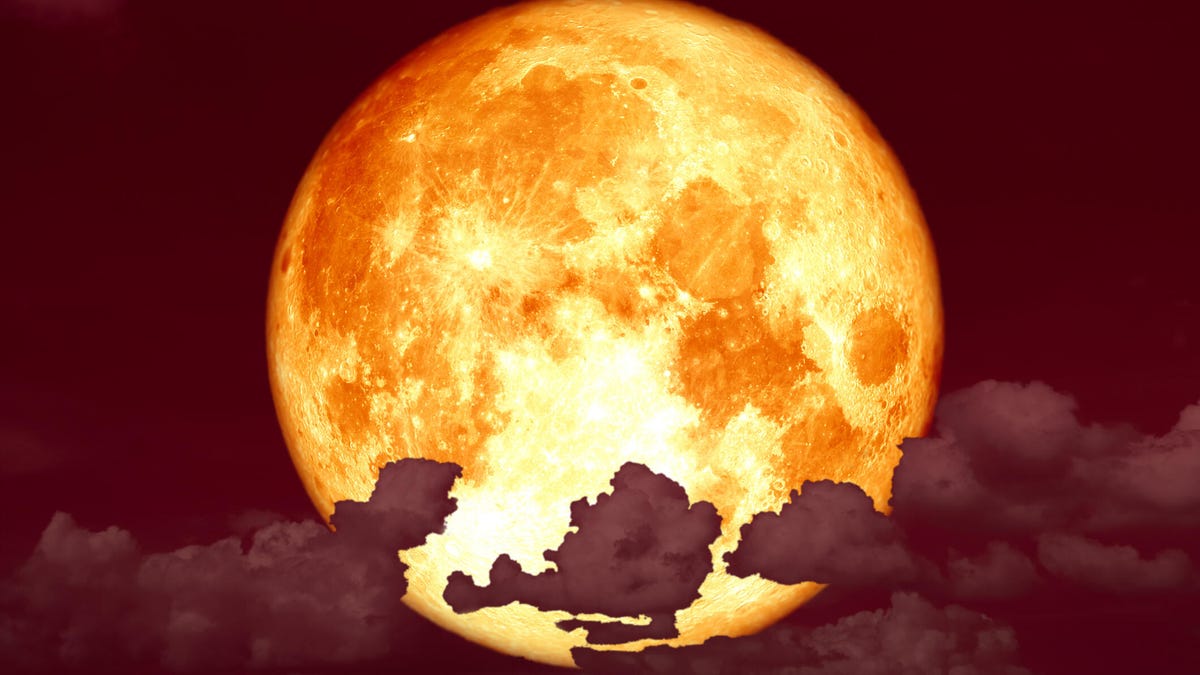
Anyone looking up at the sky at night over this weekend will get to see the strawberry moon. Unlike solar eclipses or nova explosions, the charmingly named strawberry moon happens every year. It’s the last full moon of the spring or the first full moon of the summer, and always happens in June.
This year’s strawberry moon is a little more special than most. It officially takes place over the weekend of June 21 and 22, although you’ll be able to see about 97% of its luminosity on June 20 and June 23. Coincidentally, that means the full moon is taking place at the same time as the summer solstice.
Read more: A Thermonuclear Space Explosion Could Create a New Star in the Night Sky
This means two things are going to happen. First, the moon is going to be closer than usual, which means it will look much larger in the sky than it normally does. This is referred to by The Old Farmer’s Almanac as the moon illusion. The illusion stems from the moon being close to the horizon. The human eye naturally compares its size to that of objects around it, like the tops of houses and trees. This makes it look way bigger than it would look if it were way up in the sky.
Being low on the horizon will also make the moon colorful. In short, being so close to the horizon subjects the moonlight to thicker air, thus causing it to change colors. Thus, this year’s strawberry moon will be yellow, orange, or even red depending on which part of the world it’s being viewed from. It’ll be among the lowest, biggest, and most colorful that we’ve seen in years.
Read more: Another Planetary Parade Starts on Aug. 23: Spot 6 Planets in the Sky at Once
What is a Strawberry Moon?
Despite the name conjuring up visions of a juicy red or pink moon, a strawberry moon is simpler than that. The Old Farmer’s Almanac defines a Strawberry Moon simply as the full moon that occurs in June. If there are two full moons in June, it refers to the second one. Officially, it’s the last full moon of the spring or the first full moon of the summer.
The name has Native American roots. Tribes in the northeastern US, including the Algonquin, Ojibwe, Dakota, and Lakota tribes refer to it as the strawberry moon because it appears around the same time that strawberries ripen and are ready to be gathered.
Other names include Blooming Moon, Green Corn Moon, and Hoer Moon while tribes in the Pacific Northwest refer to it as the Birth Moon, Laying Moon, or Hatching Moon, since many baby animals are born around this time every year.
When can I see this year’s Strawberry Moon?
The full moon is officially set for the evening of June 22. However, June 21 will feature a waxing gibbous at 100% luminosity, which will look exactly like a full moon. June 20 features a waxing gibbous at 97% luminosity to a full moon while June 23 will be a waning gibbous with 97% luminosity to a full moon.
What all of that means is that the moon will either be full or look full for the next four days. However, June 21 and June 22 will offer the best experiences since the moon will be at 100% fullness during those two evenings.
Mark your calendars for other lunar events
The strawberry moon is going to be interesting this year, but there are a couple of other big lunar events happening in the coming months. As per Astropixels, we’re set to get not one, but four supermoons in 2024. They will occur on Aug. 19, Sept. 18, Oct. 17, and Nov. 15. A supermoon refers to a moon that is physically closer to Earth than the average. Sept. 18’s supermoon is also the harvest moon, making it a super harvest moon.
Save the date for that Sept. 18 super harvest moon, especially. The day before the full moon, there will also be a partial lunar eclipse. It’ll be the last lunar eclipse until March 2025.